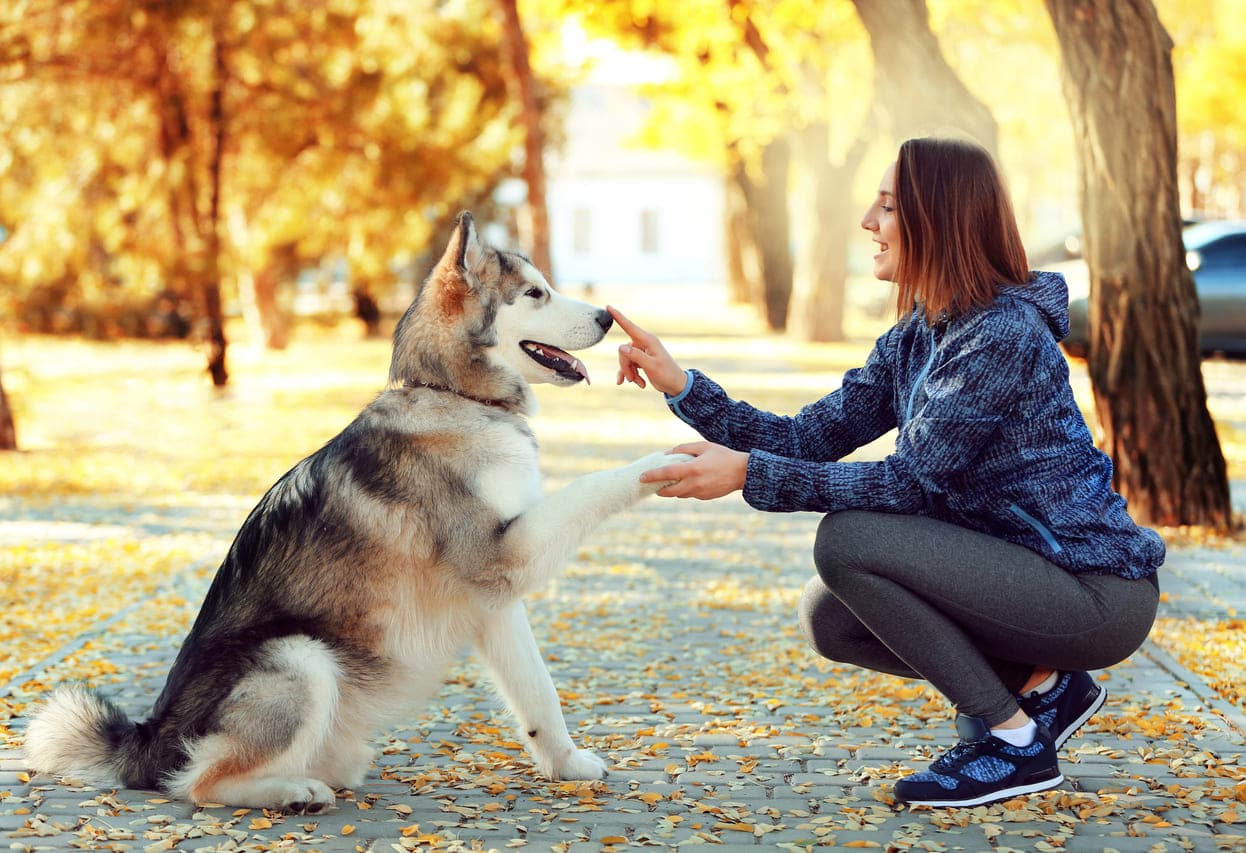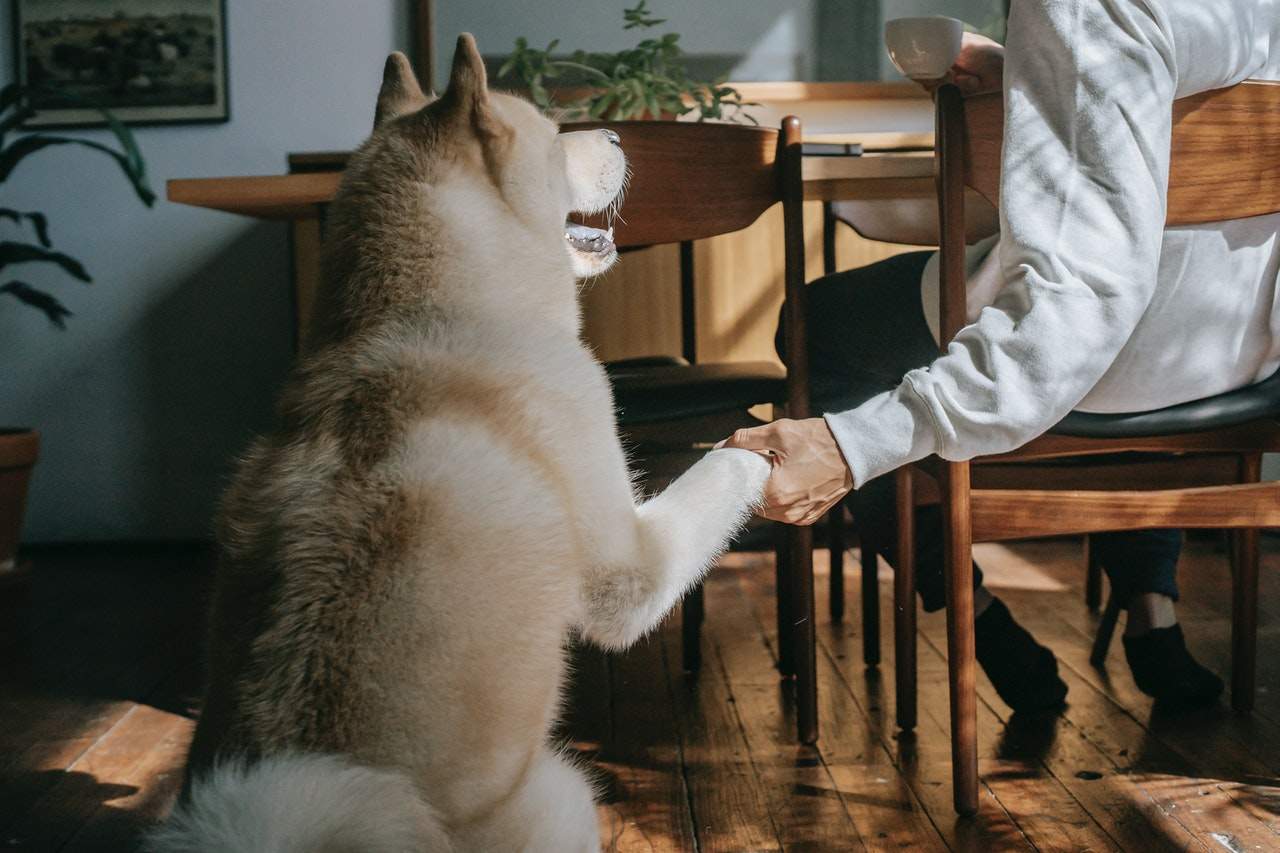
15 Easy Dog Commands in Spanish to Teach Your Pup
DATE:
Ever wondered how dogs respond to commands in different languages? Just like humans, dogs can learn commands in any language, including Spanish.
Whether you’re training a new puppy or refining the skills of an older dog, using Spanish commands can be a fun and effective way to communicate. Imagine taking your dog to a park in a Spanish-speaking country and seamlessly giving commands that everyone around understands. Not only does this enhance your dog’s training, but it also helps you immerse in the language and culture.
Let’s explore some of the most common dog commands in Spanish and see how easy it is to get started on bilingual dog training.
Most Common Spanish Dog Commands
1. Siéntate
This is probably the first command any dog learns – “Sit”. Whether in English or in Spanish, this word is key for dogs.
It comes from the reflexive verb sentarse in the imperative form. It’s a stem changer, so the “e” changes to “ie” and, since it’s a mandato, the “te” goes to the end.
It’s a very basic command for your puppy and it’s a great way for you to practice your vowel sounds. Remember that vowels are shorter in Spanish than in English, so you can perfect this one before moving onto the next command.
2. Baja
If you’ve ever adopted a new dog, what is the first habit you usually want to stop? You probably don’t want them lying on the couch (at least not at first).
Baja means “down / go down”, so whether you want your pet to get off the couch or to stop laying on top of you, this command is a must-know. It comes from the verb “bajar”, so this time the conjugation is more simple.
This is a great verb to practice your pronunciation of the “J” sound, as well. In Latin America you say it like an American /h/, but in Spain it’s a stronger, throatier sound. Use whichever you like best, but don’t pronounce it like the J in “judge”.
Just remember that if they follow the command, you’re going to want to praise your dog.
3. Buen perro / Buen chico / Buena chica
Because of course, it’s not all about telling your dogs to do things, sometimes you also want to remind them that they’re a good dog. So you have a couple different choices of Spanish vocabulary for this one.
You can teach them “buen perro” literally “good dog”. Some families will also say “buen chico / buena chica”, just like how in English we say “good boy / girl”. If they sit after saying “siéntate”, of course you’ll want to say it right after.
Another option is even easier – just say “¡muy bien!”. That’s probably the easiest word you’ll ever teach your dog.
4. Perro malo
But unfortunately, your dog doesn’t always behave the way you’d like, so sometimes you’ll have to scold them.
Perro malo means “bad dog”, but can also just be shortened to “malo”. Usually when talking to dogs, it’s more effective to use shorter phrases, but if you want to practice rolling your r’s, no one will blame you!
A third option is to use the option of “muy bien” by saying “muy mal”.
5. Quieto
This word is actually a false friend, since it doesn’t mean “quiet”, but rather “still”. So when you want your pet to stay in one spot, you say “quieto”.
This is one of those dog commands in Spanish that is used very similarly to English. You’ll want to tell your dog to stop in Spanish while holding up your palm. You can never go wrong by combining the command with a visual cue.
It’s also another great opportunity to practice your pronunciation. It’s only two syllables: quie-to, not qui-e-to, like many English speakers tend to say, so make sure you pay attention to this useful phrase.
6. Ven
So for the opposite, when you want your puppy to run to you, you’ll say “ven”, which means “come”. This term is great for when you’re playing outside or at a dog park.
Ven comes from the imperative of venir. It’s one of the irregular verbs in the tú form, so it’s short and simple.
Just remember that in the Spanish language, there’s no “V” sound like in English. B’s and V’s are both pronounced like a B, so the words vaya and baya are said the same way.
Alternatively, you could also say “ven aquí / acá”. In many parts of Latin America, people will say “acá”, while in Spain people almost exclusively say “aquí”.
7. Trae
This command comes from the verb traer, “to bring” and here it’s used in the same context as “fetch”.
It’s one of the easier Spanish words, so it’s a good starting point if you’re working on training your dog in Spanish.

8. ¡Vamos!
Surely you’ll recognize this command. It means “let’s go!” and will definitely get your pup hyped up. You can combine this one to teach your dog other commands, too.
For example, “vamos a pasear” is your fluffy best friend’s favorite phrase: “Let’s go for a walk”.
Just remember what we talked about with the letter “V”, it should be pronounced with a /b/ sound.
9. Suelta
This is probably one of the most important Spanish commands to teach your furry best friend. We’ve all been in the situation where your dog has their teeth around something they shouldn’t.
So instead of resorting to “bad dog”, this dog command comes in handy – ¡Suelta! (drop).
Dogs respond well to authority, so make sure you’re confident when you speak and in no-time you’ll have taught your dog another phrase.
You can also say “suéltalo / suéltala” if you know what to call the object in their mouth. For instance, if they’re chewing on a ball and you want to keep playing fetch, you’d say “suéltala” for la pelota.
But if they thought it would be fun to eat your shoe, you could say “suéltalo” for el zapato.
For Spanish dog commands, it’s fine to use the pronoun or not, but notice that if you use the pronoun, these words have an accent mark so you know how to pronounce it: SUEL-ta-la.
10. Toma
This is a command you could use with your pup or with people. Toma comes from the verb tomar (to take).
With dogs, you can say this to train them to only take things from you when you want them to. You can combine this with other words or use it alone.
You could teach your dog “toma, tu comida” if you want them to eat their food. You could also say “toma la galletita” or “toma el premio” when you give them a treat.
Toma is a great (grammatical) command to know for people, as well. As you’re learning Spanish, you’ll see that native speakers use commands differently than we do in English.
As an example, if you’re at dinner and your friend says “pásame la sal”, you can hand them the salt and say “toma”. In English we’d probably say “here / here you go”, but in Spanish it’s more common to say “toma” when handing something to someone.

Continuing with this scenario, if at dinner your dog starts barking or whining, you’ll tell your pet this next command:
11. Fuera
This is a great word that means “get out”. Although grammatically it’s not an imperative verb, it’s still used like a command in this context.
You can also say “sal” or “sal de aquí” (from the verb salir) as other ways to train them to leave.
You might not use this dog command often, but it’s definitely one of the more helpful commands in Spanish for those times when a little distance will do the heart some good.
Learn all the ways you can say No in Spanish. Check out our guide here.
12. Calla
In the same context as above, sometimes if your dog is barking or you just want them to stop making so much noise, you can say “calla” (hush). It’s one of the best tricks for a pup to know, though it’s usually difficult to teach. Other options for the same meaning are “silencio” (silence) “para” (stop) or “detente” (also stop).
These Spanish dog commands are also great for language learning since you’ll have to practice pronouncing the word correctly. For example, the “LL” sound can be difficult for English speakers.
The word has two syllables and the second has a strong Y sound like in “You”. Ca-lla
Because if your furry friend has a tendency to bark a lot, it’s important to speak this word clearly.
13. Échate
This is another great trick to teach your pupper. This might be one of the harder Spanish dog commands, but it’ll certainly impress your friends.
Échate means lay down. You can also say “túmbate” in Spain. So after you’ve managed to teach them to sit, this seems like a great choice to teach your dog a new Spanish word.
14. Sube
This verb is the opposite of baja, it means “up / get up”. So if you’re one of the pet owners that likes to snuggle them in bed, you can tell them “ven aquí, sube”.
This is a command you can use with people, as well. For instance, if your friend or your family member forgot something upstairs, you could tell them, “sube a por tus cosas” (go up and get your things).
In Latin American households, people might also say “arriba”, which isn’t a verb, but is one of the Spanish dog commands like fuera that is commonly used anyway.
15. Dame la pata
This last word on the list is luckily an easy one for pet owners. Dame la pata means “give me your paw”.
So after you train them the dog commands “quieto” and “siéntate”, one of the most common tricks to follow is “dame la pata”. Some people also say “dame la patita” if it’s a smaller pet. And remember to say “muy bien”, after so your Spanish-speaking dog knows they did well.

Dog Treats in Spanish
When training your dog, treats are an essential tool. Learning the Spanish terms for various dog treats can make your training sessions more engaging and help you shop for them in Spanish-speaking regions.
|
Spanish |
English |
|---|---|
|
Galletas para perros |
Dog biscuits |
|
Premio |
Treat |
|
Hueso |
Bone |
|
Chuchería |
Goodie |
|
Barritas |
Sticks |
|
Comida húmeda |
Wet food |
A Bilingual Dog To A Bilingual Owner!
Those are some of the most common dog commands in Spanish language, so if you want to continue practicing learning a new language at home, your pet will be there to practice with you.
If you have Spanish-speaking friends, you can impress them by owning a bilingual dog. But if none of your friends speak Spanish, then your dog is guaranteed to always listen to you since it’ll speak a different language.
Now that you’ve mastered Spanish dog commands, it’ll be even easier for you to use normal Spanish commands in real life. And since we use the imperativo with real people all the time, go ahead and sign up for a free private class or a 7-day free trial of our group classes so you can practice what you learned.











